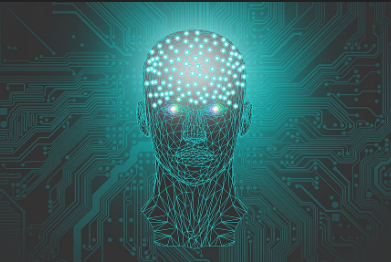Artificial Intelligence (AI) in diagnostics is a highly influential innovation in modern medicine. AI technologies, such as machine learning, deep learning, and natural language processing, are being incorporated into diagnostic procedures to improve accuracy, efficiency, and customisation in healthcare. This chapter explores the progress, uses, advantages, obstacles, and future prospects of AI in diagnostics.
Telemedicine and Digital Health
Significant progress or breakthroughs:
1. Image Analysis and Interpretation: Artificial intelligence algorithms, namely convolutional neural networks (CNNs), are extremely proficient at examining medical images obtained from radiology, pathology, and dermatology. These technologies can accurately identify abnormalities such as tumours, fractures, and lesions.
Google’s DeepMind has created an artificial intelligence (AI) system that can accurately detect eye illnesses by examining retinal scans, achieving comparable results to those of skilled ophthalmologists.
2. Predictive Analytics:
Artificial intelligence models can forecast the occurrence of illnesses by examining extensive datasets derived from electronic health records (EHRs), genetic data, and patient medical history. These prognostications facilitate prompt action and precautionary healthcare.
IBM Watson Health uses artificial intelligence (AI) to forecast the probability of heart disease by examining patient data, which encompasses aspects of lifestyle and medical history.
3. Natural Language Processing (NLP):
It allows AI systems to analyse and handle unstructured medical documents, such as medical records and research articles. This facilitates the extraction of essential data and assists in the process of making healthcare decisions.
Nuance’s Dragon Medical One utilises Natural Language Processing (NLP) to precisely transcribe physicians’ notes, hence enhancing the efficiency of documentation.
4. Incorporation with Wearable Devices:
Wearable devices enhanced with artificial intelligence (AI) constantly track symptoms and other health measurements, delivering immediate diagnostic data and notifying users and healthcare professionals about potential health problems.
The Apple Watch utilises artificial intelligence (AI) to identify abnormal heartbeats and alert users about the possibility of atrial fibrillation, so encouraging them to seek additional medical assessment.L:
Benefits
1. Enhanced Diagnostic Precision:
Artificial intelligence algorithms can analyse extensive quantities of data and identify patterns that may elude medical professionals, resulting in more precise assessments.
2. Efficiency and Speed:
Artificial intelligence (AI) systems can quickly evaluate complicated medical data, which reduces the amount of time needed for medical diagnostics and speeds up the decision-making process
3. Personalised Medicine:
Artificial intelligence facilitates the tailoring of treatment strategies according to unique patient data, encompassing genetic characteristics and lifestyle characteristics, resulting in enhanced and individualised healthcare.
4. Cost Reduction in Healthcare:
Through enhancing diagnostic precision and efficiency, AI has the potential to minimise the necessity for redundant tests and unwarranted treatments, hence leading to a decrease in healthcare expenses.
5. Improved Accessibility: Artificial intelligence-driven diagnostic tools can be utilised in rural and underserved regions, granting access to top-notch diagnostic services in areas which they are otherwise inaccessible.
Challenges
1. Data Quality and Bias:
Artificial intelligence algorithms necessitate substantial quantities of well curated data for effective training. Should the data be biassed or incomplete, the AI’s diagnostic abilities may be damaged, resulting in erroneous or unjust decisions.
2. Regulatory and Ethical Issues:
The implementation of AI in diagnostics gives rise to regulatory and ethical considerations, such as safeguarding patient privacy, ensuring data security, and establishing strong supervision to guarantee the safety and efficacy of AI systems.
3. Integration with Existing Systems:
The process of incorporating AI technologies into current healthcare infrastructure, such as electronic health record (EHR) systems, can be technically complex and necessitate substantial investment and collaboration.
4. Clinician Acceptance and Training:
Healthcare personnel must undergo training to proficiently utilise AI tools and have confidence in the advice they provide. Resistance to the adoption of cutting-edge innovations can arise, particularly when they are seen as posing a risk to established methods.
5. Transparency and Explainability:
Numerous AI models, particularly deep learning systems, function as “black boxes,” rendering it arduous to comprehend the process by which they reach their findings. The absence of openness might impede the development of trust and acceptance.
Future Directions
1. Hybrid models That involve the integration of artificial intelligence (AI) with human expertise, which can significantly improve the accuracy and dependability of diagnostic processes. Artificial intelligence is capable of managing jobs that include a large amount of data, however, human clinicians offer a deeper grasp of the situation and demonstrate empathy.
2. Continuous Learning and Adaptation: AI systems can consistently acquire knowledge and adjust their functioning based on fresh data, hence enhancing their ability to diagnose effectively as time progresses. This necessitates continuous data gathering, annotation, and model refinement.
3. AI-powered personal health assistants may advance to the point where they may offer users direct diagnostic services, real-time health monitoring, and customised health advice.
4. Collaborative systems that include artificial intelligence (AI) and blockchain technology for enhanced data security and interoperability have the potential to revolutionise diagnostic processes.
5. Global Health Initiatives: Artificial intelligence (AI) can have a significant impact on global health initiatives by offering scalable diagnostic solutions in areas with limited resources. This can help bridge the gap in healthcare access and improve results for underserved populations.
Conclusion
The application of Artificial Intelligence in diagnostics is transforming the area of medicine by improving the precision, efficiency, and customisation of diagnostic procedures. In order to fully harness the promise of AI in healthcare, it is crucial to address the hurdles associated with data quality, regulatory concerns, and integration, despite the considerable benefits it offers. With the ongoing advancement of AI technology, it holds the potential to revolutionise the diagnosis and treatment of diseases, leading to better patient outcomes and a complete transformation of the healthcare industry.
